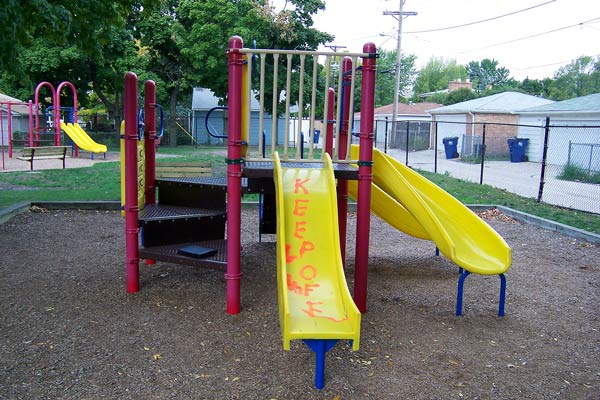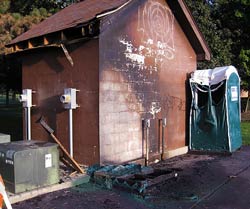 Using Design to Prevent Vandalism and Crime
Using Design to Prevent Vandalism and Crime
Vandalism is a challenging — and expensive — property crime to control. Between 2007 and 2011, PDRMA paid out $1.6 million in vandalism claims, but that doesn’t include the cost to park districts and their communities.
 “When vandalism like graffiti or tagging defaces a park, it also deflates a community’s spirit,” says Paul Timm, president of RETA Security and PDRMA’s security consultant. “Vandalism involving arson is even more serious, since it puts firefighters’ lives at risk as well as property. For both occurrences, PDRMA can offer members both old and new solutions.” “When vandalism like graffiti or tagging defaces a park, it also deflates a community’s spirit,” says Paul Timm, president of RETA Security and PDRMA’s security consultant. “Vandalism involving arson is even more serious, since it puts firefighters’ lives at risk as well as property. For both occurrences, PDRMA can offer members both old and new solutions.”
Crime (and Vandalism) Prevention through Environmental Design
In November, PDRMA introduces a new training resource to complement the written materials and videos available to combat this all-too-common parks and playground occurrence. Crime (and Vandalism) Prevention through Environmental Design (CPTED), presented by Timm, will take place at Bolingbrook Park District on Nov. 12 from 9 a.m. to 12 p.m.
| Arson Tipster Award Program
After a recent, serious arson occurrence at Park Ridge Park District, Superintendent of Buildings and Grounds Terry Wolf looked into PDRMA’s Arson Tipster Award Program.
“Over the past three years, we added several dozen security cameras in our parks and facilities,” he explains, “which helped deter unlawful activity and catch culprits.” But a large park renovation was a vandalism target over the past year.
“The tipping point was in late August,” he remembers. “The playground at Southwest Park was set on fire. I immediately contacted Jesse Kinsland (PDRMA Risk Management Consultant) who asked if I was aware of the Arson Tipster program. I wasn’t, and he provided me with the details.”
The program provides members with templates for posters and advertisements, a press release template and a nomination form for award winners. The goal is to encourage the public to provide information leading to the arrest/conviction of the responsible party.
“I worked with our Marketing Department to enhance the posters and provide pictures of the playground that was destroyed,” says Wolf. “PDRMA provides up to a $500 reward for information, and we decided to increase it to $750.”
Wolf’s vandalism-prevention suggestion to fellow members is to get to know the neighbors of your parks. “I have a few trusted community members near our parks that have my cell phone number,” he explains. “During a previous park renovation project, one of them called me to report some kids had knocked down a fence and gained access to the construction site. I contacted the police, and they apprehended the trespassers. It could have ended much differently — with someone being hurt or causing property damage — if not for a good relationship with a neighbor.” |
By incorporating proper design into the environment, you can create an easy and cost-effective solution to prevent what Timm calls “easy pickings” in vandalism and crime. “Trimmed vegetation is important,” he explains. “Pay attention to vegetation in parking areas, along walkways and by entrances and exits. We all feel safer with good ‘natural surveillance,’ so use miniature shrubs and remove lower tree limbs to provide clear lines of sight.
Timm condenses the CPTED approach down to four basic principles: Natural surveillance, designed access control, border definition and maintenance.
“If you’re experiencing lots of graffiti with no visibility due to overgrown vegetation, that means it’s time to trim or remove the shrubs and cut tree limbs so natural surveillance sight lines are clear for cameras, lights and police cruisers,” he explains. “Something as simple as a painted pedestrian walkway — with designed access control — directs patrons and visitors to use areas that are more visible.”
Don’t immediately assume you need a high security fence as a deterrent, cautions Timm. “You can define borders with a hedge line around a parking lot or field. The message is still that you need permission to enter the enclosed area.”
Maintenance is a key point that members sometimes overlook. But Timm stresses it’s an integral part of discouraging vandalism and crime. “You want to keep your grounds neat, clean and orderly,” he says. “For instance, if there is construction, stow the materials instead of leaving them out. If bricks or pallets are within easy reach, it just gives vandals tools to work with. You don’t want to make it easy for them to cause damage.”
PDRMA Resources:
|

